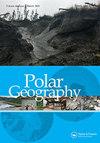北白令海-楚科奇海大海域跨界海洋哺乳动物管理
IF 1.6
Q3 GEOGRAPHY, PHYSICAL
引用次数: 3
摘要
北极土著社区获取陆地和海洋野生动物。这种准入有助于他们的粮食主权。对在国际上迁徙的野生动物管理不力,危及当地和区域对这些物种的获取,进而危及狩猎做法和人类健康。尽管普遍认识到有效的跨界管理在粮食安全方面的作用,但对这个问题的研究仍然不足。一个令人困惑的问题是,为什么一些食物来源(即海洋哺乳动物)通过跨界政策得到了可持续管理,而另一些则没有。在米切尔的“四个因素”框架的指导下,本研究比较了北白令海-楚科奇海大型海洋生态系统中白令海-楚科奇海弓头鲸种群和楚科奇海北极熊种群的跨境管理效果。我们发现,这些案例在治理和透明度方面存在分歧。关于楚科奇海北极熊种群的管理,信息和激励措施只是有时才有的,能力很少。基于评估的跨界协议的有效方面,我们对北极跨界海洋哺乳动物管理提出以下建议:1)将地方和区域的财政、行政和技术能力纳入决策表;2)将西方科学与土著知识结合起来使用或共同生产知识。本文章由计算机程序翻译,如有差异,请以英文原文为准。
Transboundary marine mammal management in the Northern Bering-Chukchi Sea Large Marine area
ABSTRACT Indigenous arctic communities access terrestrial and marine wildlife. This access contributes to their food sovereignty. Ineffective management of wildlife that migrate internationally jeopardizes local and regional access to these species and subsequently hunting practices and human health. Despite general recognition of the role of effective transboundary management in food security, the issue remains under-studied. One puzzle is why some food sources (i.e. marine mammals) with transboundary policies have been sustainably managed, while others have not. Guided by Mitchell’s ‘four factors’ framework, this research compares the effectiveness of the transboundary management of the Bering-Chukchi-Beaufort bowhead whale population and the Chukchi Sea polar bear population in the Northern Bering-Chukchi Sea Large Marine Ecosystem. We find that the cases diverged in terms of governance and transparency. Regarding the management of the Chukchi Sea polar bear population, information and incentives were only sometimes present and capacities were rarely present. Based on the effective aspects of the evaluated transboundary agreements, we recommend the following for transboundary marine mammal management in the Arctic: 1) that local and regional financial, administrative, and technical capacities are included at the decision-making table, and 2) that western science is used in conjunction with Indigenous Knowledge or to co-produce knowledge.
求助全文
通过发布文献求助,成功后即可免费获取论文全文。
去求助
来源期刊

Polar Geography
GEOGRAPHY, PHYSICAL-
CiteScore
5.30
自引率
0.00%
发文量
13
期刊介绍:
Polar Geographyis a quarterly publication that offers a venue for scholarly research on the physical and human aspects of the Polar Regions. The journal seeks to address the component interplay of the natural systems, the complex historical, political, economic, cultural, diplomatic, and security issues, and the interchange amongst them. As such, the journal welcomes comparative approaches, critical scholarship, and alternative and disparate perspectives from around the globe. The journal offers scientists a venue for publishing longer papers such as might result from distillation of a thesis, or review papers that place in global context results from coordinated national and international efforts currently underway in both Polar Regions.
 求助内容:
求助内容: 应助结果提醒方式:
应助结果提醒方式:


